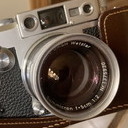24-90mm Focus Shift (Diglloyd)
-
Recently Browsing 0 members
- No registered users viewing this page.
-
Similar Content
-
- 8 replies
- 143 views
-
- 13 replies
- 660 views
-
- 6 replies
- 497 views
-
- 562 replies
- 92,632 views
-
- 12 replies
- 635 views
-


Recommended Posts
Join the conversation
You can post now and register later. If you have an account, sign in now to post with your account.
Note: Your post will require moderator approval before it will be visible.